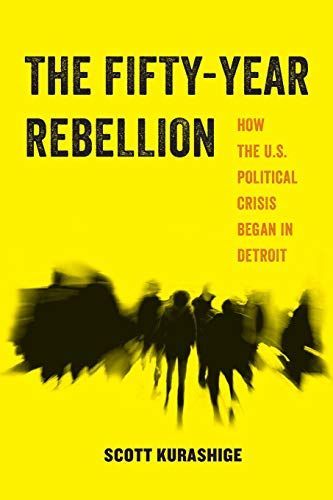
The Fifty-Year Rebellion How the U.S. Political Crisis Began in Detroit
"On July 23, 1967, the eyes of the nation fixed on Detroit as thousands took to the streets to vent their frustrations with white racism, police brutality, and vanishing job prospects in the place that gave rise to the American Dream. For mainstream observers, the "riot" brought about the ruin of a once-great city, and then in 2013, the city's municipal bankruptcy served as a bailout that paved the way for Detroit to finally be rebuilt. Challenging this prevailing view, Scott Kurashige portrays the past half-century as a long "rebellion" the underlying tensions of which continue to haunt the city and the U.S. nation-state. Michigan's scandal-ridden emergency-management regime represents the most concerted effort to quell this rebellion by disenfranchising the majority black citizenry and neutralizing the power of unions. The corporate architects of Detroit's restructuring have championed the creation of a "business-friendly" city where billionaire developers are subsidized to privatize and gentrify downtown while working-class residents are squeezed out by rampant housing evictions, school closures, water shutoffs, toxic pollution, and militarized policing. From the grassroots, however, Detroit has emerged as an international model for survival, resistance, and solidarity through the creation of urban farms, freedom schools, and self-governing communities. A quintessential American story of tragedy and hope, The Fifty-Year Rebellion forces us to look in the mirror and ask, Are we succumbing to authoritarian plutocracy, or can we create a new society rooted in social justice and participatory democracy?"--Provided by publisher.